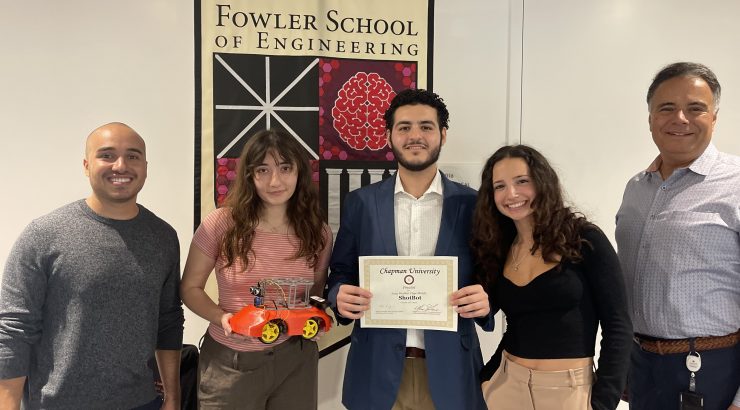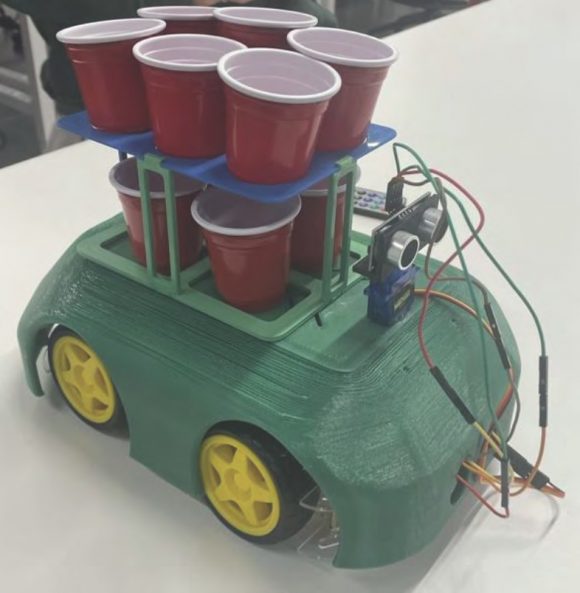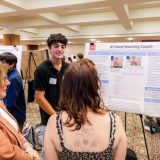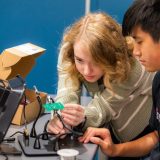
ShotBot Competes in Panther Cage Match
November 11, 2022
A team of Fowler School of Engineering (FSE) students developed ShotBot, a drink delivery device used to improve efficiency and cut operating costs in restaurants and bars.
According to the ShotBot team’s research, 37 percent of restaurants reopening after the pandemic in California are unable to pay their rent and 350,000 restaurant jobs remain unfilled.
That’s where ShotBot comes in. The autonomous artificial intelligence system includes payment and identification, integrated cloud supply chain, and drink safety mechanisms.
How it works:
Customer orders a shot, bartender pours shot and places them in ShotBot safe shot glass holders, ShotBot delivers shots to the customer and scans ID and takes payment. Drinks are delivered in an efficient-safe manner while time is being saved.
At Panther Cage Match, the team of FSE students, Gilberto Arellano (’23 Software Engineering), Darron Kotoyan (’23 Data Science), Marisa Mini (’23 Data Science), and Ponthea Zahraii (’24 Computer Science) submitted ShotBot for a chance to win $3,000 (first place prize) at the one-day, “Shark Tank” – style pitch competition hosted by Chapman University’s Leatherby Center for Entrepreneurship and Business Ethics.
Over 25 pitch applications were entered and only six finalists were chosen, ShotBot being one of them. The six teams or individuals had eight minutes to pitch their idea to a panel of professional entrepreneurs and investors. Although the ShotBot team did not place first, the experience of a “Cage Match” and selling an idea that they created, was just as rewarding.
“I am really glad I put in the effort and time into this project, especially for Panther Cage because it allowed me to see what pitching a product is like in the real world, and how important it is to know who you’re pitching your ideas to,” said Zahraii.
ShotBot originated last spring when the team was given a project in Engineering and Design, with Professor Anthony Lemus, to create their own device using Arduino kits (a kit that helps you learn coding and make electronic projects).
“We had to use techniques we learned in class to get our prototype working. Our group decided to also incorporate the use of the 3D printing machines in Swenson to make the body of ShotBot. Not only did we learn new engineering and design tactics from this project, but we also learned how to present our idea to investors and business tactics,” said Mini.
Coding for just over a year, Zahraii was able to take what she had learned in the Chapman classroom and create a project from scratch.
“I really enjoyed working on this project because it taught me how coding can be applied in the real world. This was the first time I was able to create a project outside of something that I was given specific instructions on how to do in class. Learning how to troubleshoot and figuring out how to solve the problems that we faced and even find ways to make our product more efficient was greatly beneficial to me because it allowed me to gain experience in product design,” she said.
(Pictured at top, left to right: Gilberto Arellano, Ponthea Zahraii, Darron Kotoyan, Marisa Mini and Professor Anthony Lemus. Photo by: Adena Hamlin.)


